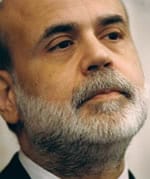United states
 |
|
Bernanke under pressure as he fends off calls for a rate cut. |
Federal Reserve chairman Ben Bernanke didn’t exactly call out the helicopters and dump bundles of money on Wall Street last month to keep the markets from crashing. At the height of the crisis on August 9, when the European Central Bank pumped a record $130 billion into the money markets to keep them from seizing up, the Fed injected a more modest $24 billion. While Bernanke was willing to act to head off a liquidity crisis, he refused to cave in to calls for a cut in interest rates.
History will judge how well the Fed chief handled his first major test in the second most difficult job in Washington. The immediate reaction was favorable, however, as equity markets rallied following the Federal Open Market Committee’s decision last month to keep the federal funds rate at 5.25% and to maintain its bias in favor of a tightening if necessary should inflation fail to moderate.
The FOMC’s statement made note of the ongoing turmoil in the financial markets as a result of the subprime mortgage problems and a general repricing of credit risk. But the Fed refused to conclude that this posed an immediate threat to the economy. If the Fed had acted to cut rates, it could have frightened investors into thinking that the economy was in serious trouble. A cut could also have triggered a plunge in the dollar, which actually rallied slightly in the days following Bernanke’s intervention.
Meanwhile, Bernanke made it clear that the Fed was not about to bail out those who took too much risk. He wants to avoid the moral hazard of encouraging risky behavior.
Distress in the markets may ultimately force Bernanke’s hand, but as some economists noted, a short-term fix could create long-term problems on the inflation front. The Fed cannot be faulted for keeping its focus on the broad economy.
Gordon Platt



